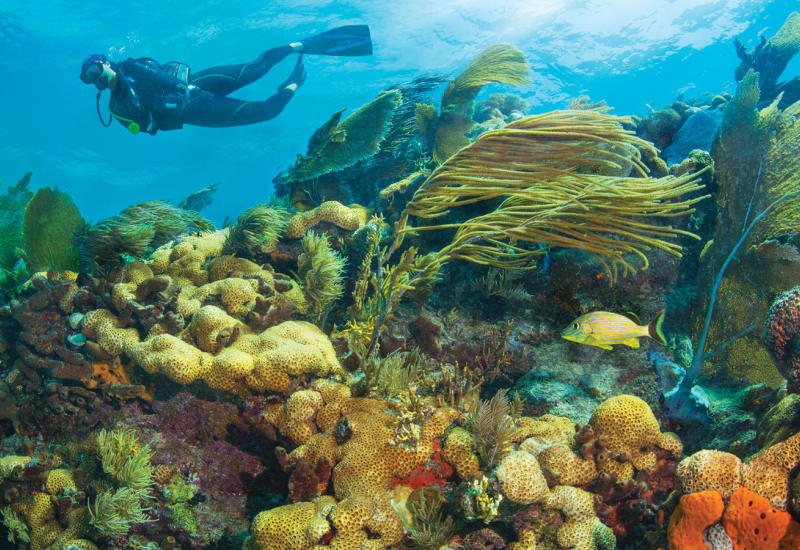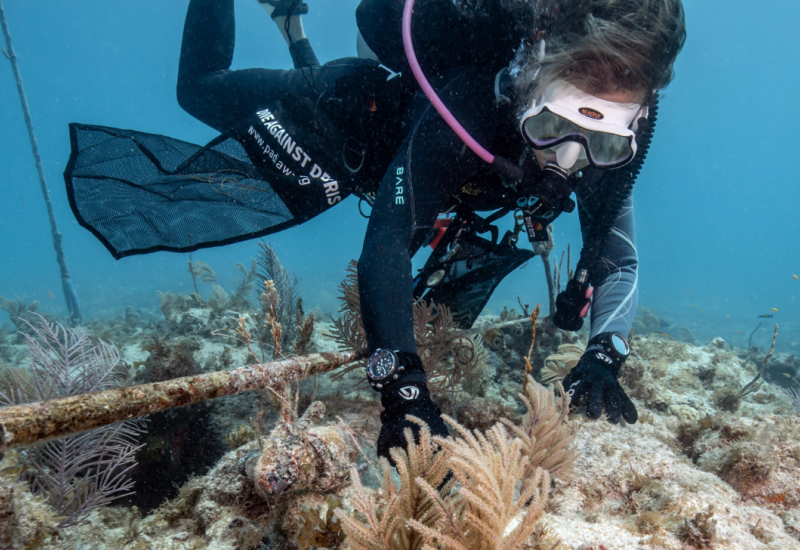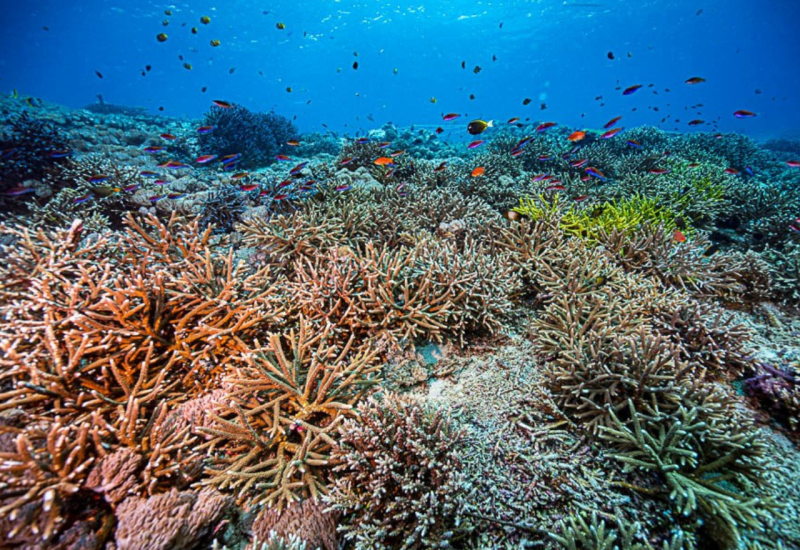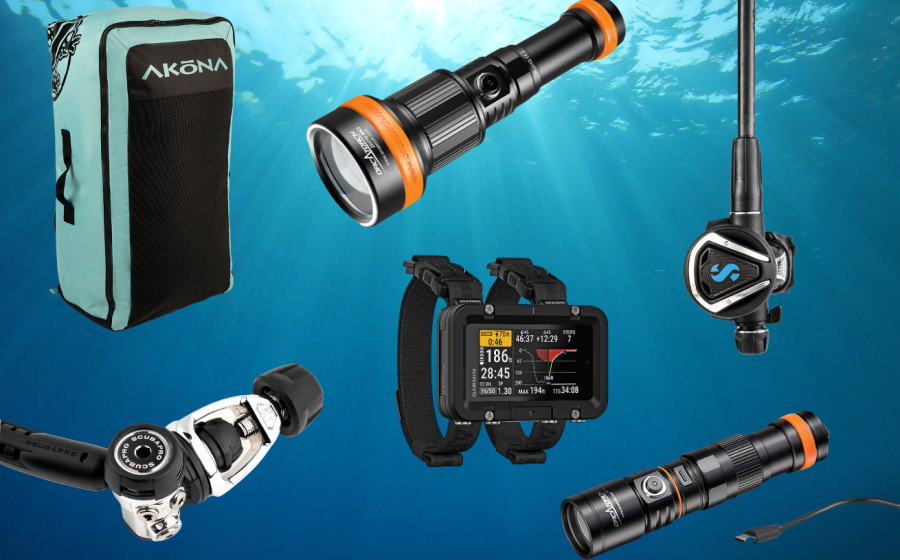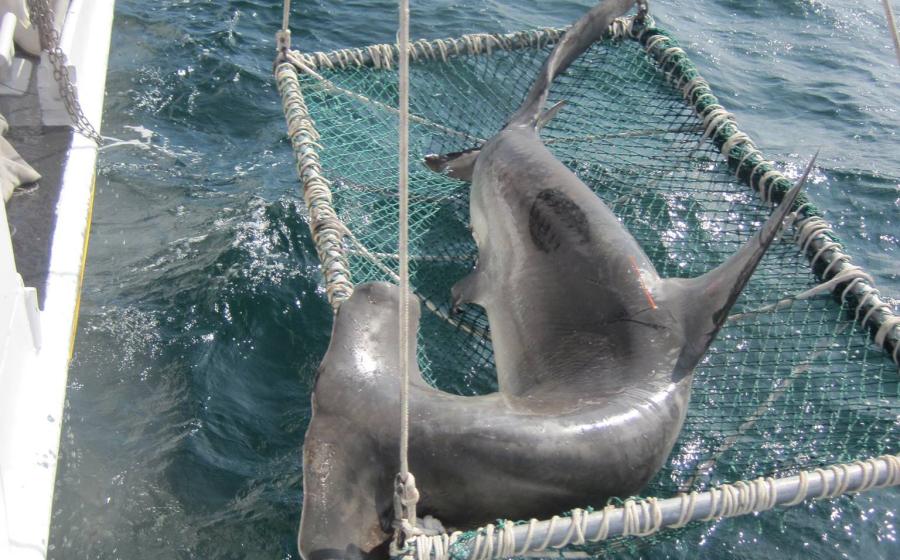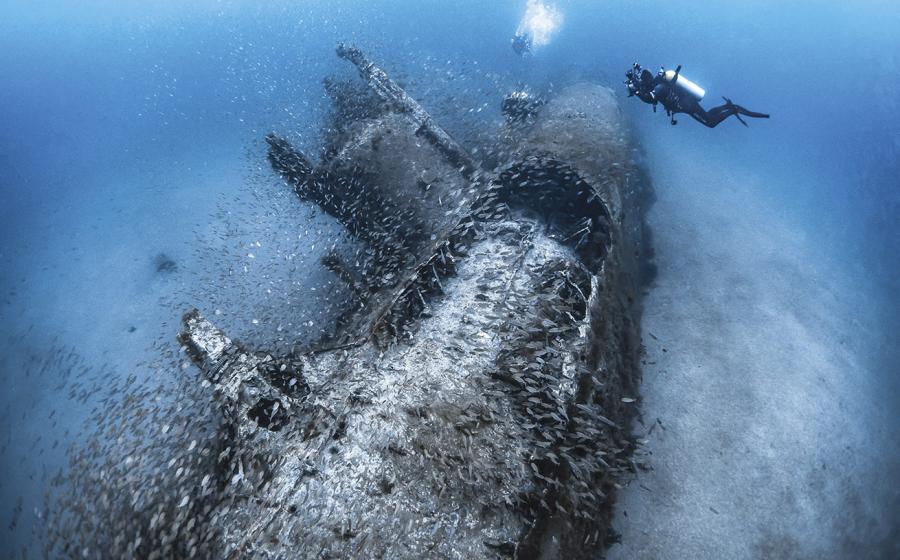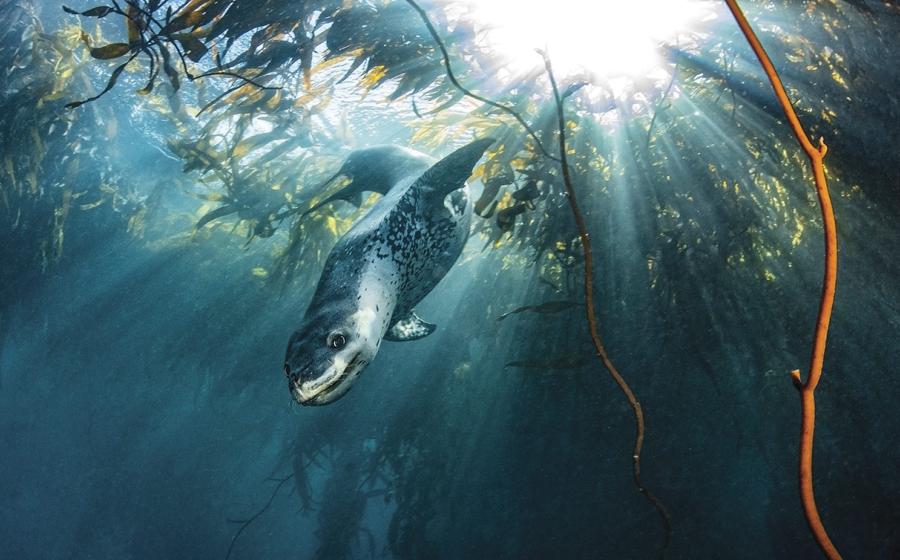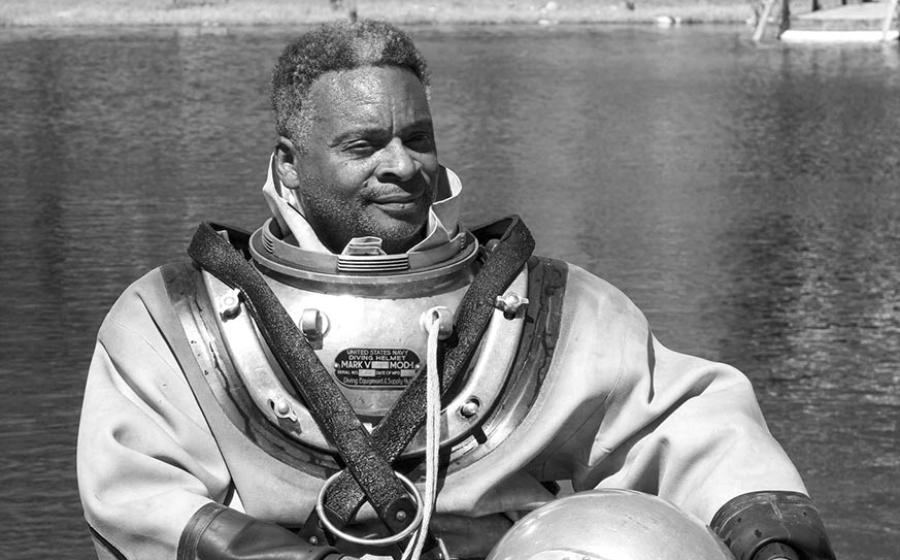Record-Setting Sargassum Event Threatens Marine Life and Dive Conditions in Caribbean
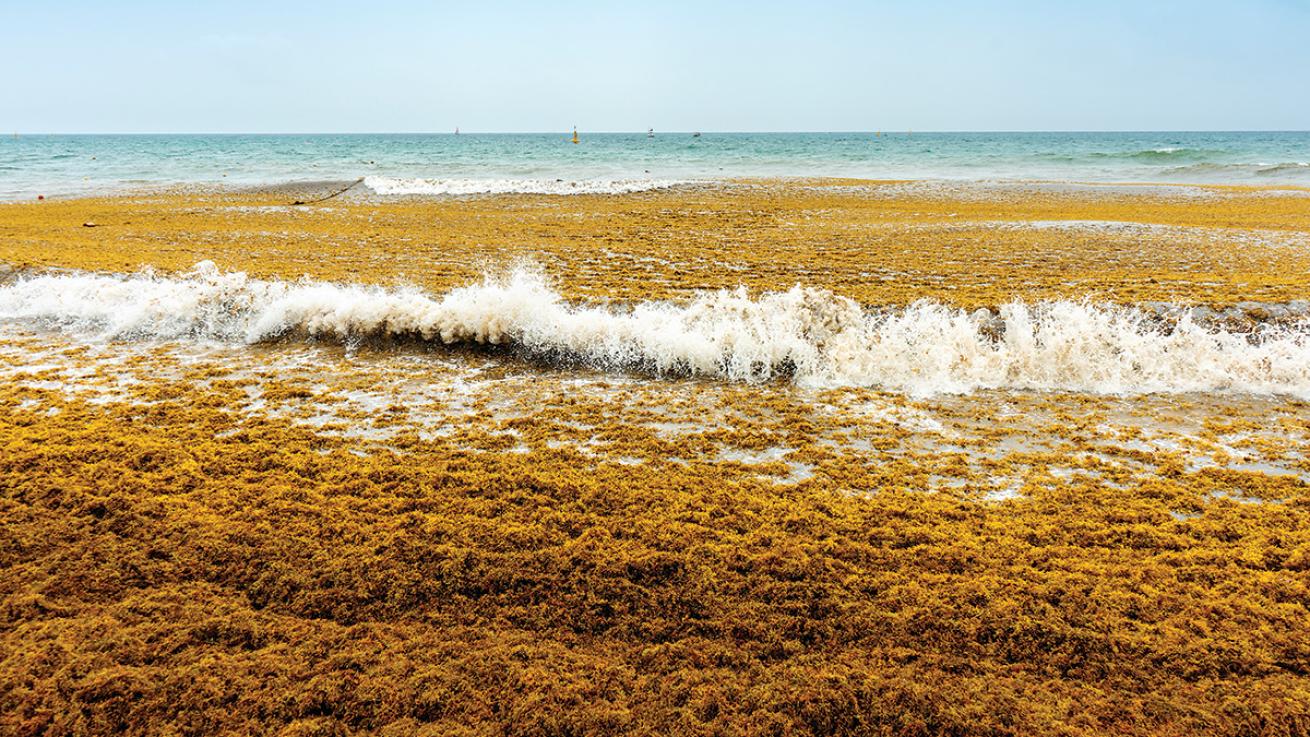
Playa del Carmen/shutterstock.comAvoid them or embrace them, though, sargassum blooms may be the new normal. And we have only ourselves to blame.
The spring and summer seasons brought a new style for the Caribbean’s iconic white-sand beaches — mounds and mounds of brown, stringy, stinky sargassum.
Divers encountered piles of the seaweed floating nearshore and covering beaches in Little Cayman, Barbados, Antigua, and other destinations throughout the Caribbean and western Atlantic. The unattractive, stinky seaweed kept many away from the sand and sometimes interfered with dive plans.
Sargassum is usually a diver’s friend. This vital marine ecosystem provides food, shelter, breeding grounds and nursery habitat for a wide variety of life, including fish, sea turtles and birds. As mats lose their buoyancy and sink, they feed creatures throughout the water column. The algae also add nutrients and structure to beaches.
But in recent years, sargassum has appeared in unusually great quantities, called blooms, and in places it typically did not. Research shows that blooms result from increased runoff of nutrients from land and warmer waters. Where they end up depends on wind, tides and ocean currents, which have shifted as a result of climate change.
But Hazel Oxenford, a fisheries biologist at the University of the West Indies in Barbados, points out that many areas remained unaffected.
“The news created impressions of whole islands covered by great, stinking plumes of sargassum,” Oxenford says. “But it comes ashore on windward coastlines, and most tourism infrastructure in the Caribbean is on the leeward side of islands.”
In Barbados, for example, sargassum inundated the east coast, which is generally considered too rough for diving.
And while the stuff covered beaches at Little Cayman’s resorts, most dive sites lie on the opposite side of this small island. In general, dive shops simply adopted the strategy of frequenting dive sites unaffected by sargassum, says marine biologist and dive instructor Andre Miller of Barbados Blue Watersports.
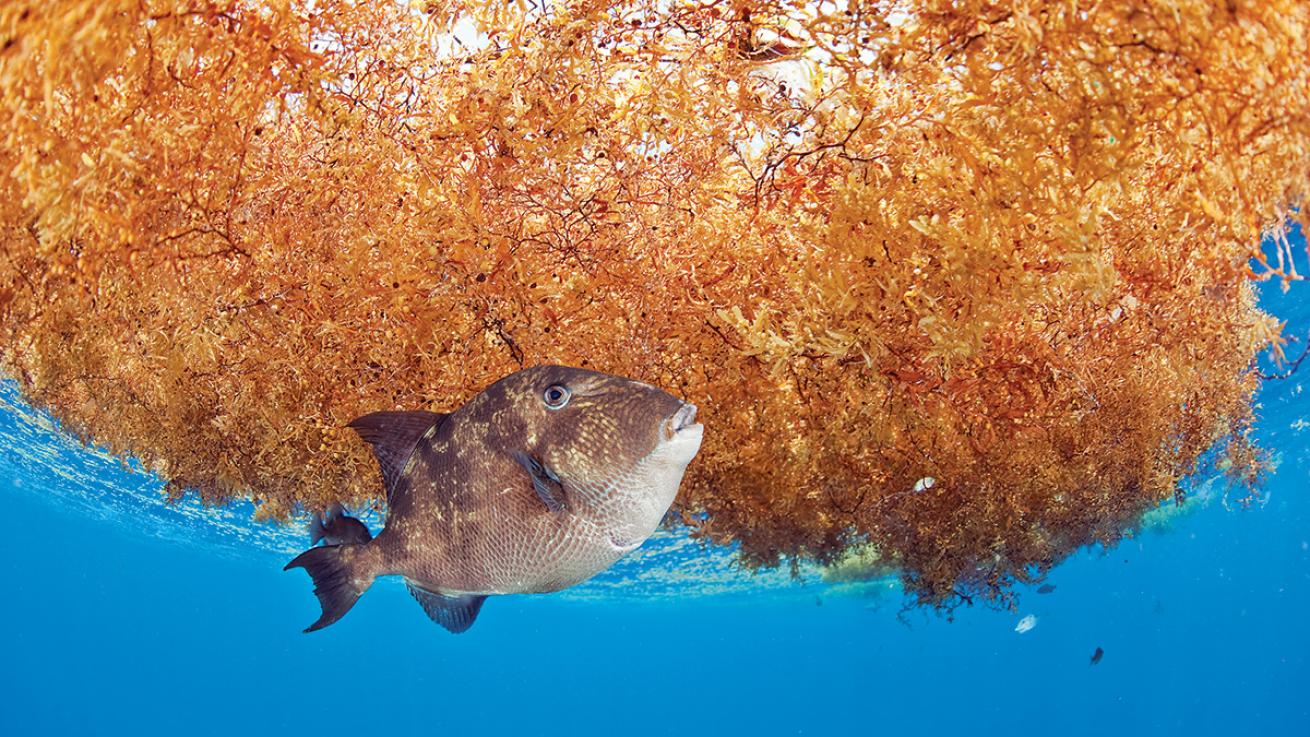
oceanwideimages.comSargassum can play the role of floating habitat for titan triggerfish and more.
The seaweed did get swept into large bays on the southeast coast of Barbados and those on Antigua where — as the seaweed decomposed — it turned the water brown.
One Barbados dive instructor blamed it for a temporary drop in viz from 100-plus feet to about 15 feet in Carlisle Bay. The thick mats also can make it difficult to launch boats and foul the engines of those who encounter it.
Sargassum blooms also affect marine life that attract divers in the first place. Miller reports that recent blooms have killed sea turtles, dolphins and fish. Floating mats can block needed sunlight from sea-grass beds and coral reefs, and heavy beach accumulations appear to discourage sea turtles from nesting. Sea turtle hatchlings can die due to hyperthermia, exhaustion, drowning and predation as they navigate thick seaweed on the beach and in the water.
Divers making plans for next spring and summer can check the Sargassum Watch System, maintained by the University of South Florida’s Optical Oceanography Laboratory. It shows satellite images of Caribbean locations affected by past blooms, making them candidates to experience future blooms.
Travelers also can view and share sargassum images on Texas A&M University at Galveston’s Sargassum Early Advisory System Facebook page, and ask experts questions about conditions in the Caribbean and Gulf of Mexico. The system uses NASA satellite imagery of blooms and scientific tracking of ocean currents to make short-term predictions of where sargassum might land.
Ironically, sargassum mats make for interesting dive sites. Species commonly found beneath them include many types of jacks, flying fish, tripletail, cobia, dolphinfish, vermilion snapper, swordfish, pipefish, scrawled filefish, gray triggerfish, barracuda, tuna and billfishes, as well as juvenile sea turtles and a variety of crustaceans.
Avoid them or embrace them, though, sargassum blooms may be the new normal, Miller says. And we have only ourselves to blame.

